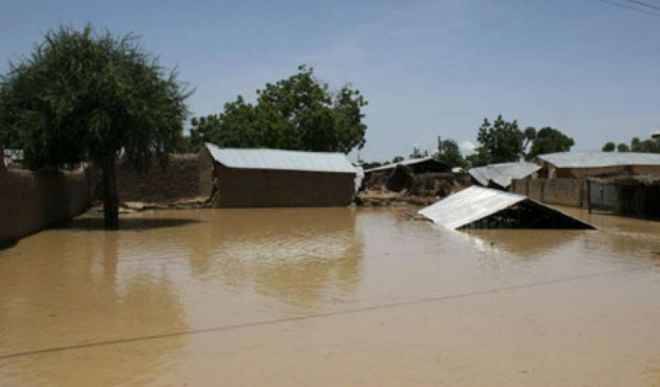In a move to save the country from another wide spread flood disaster, the Nigerian Hydrological Services (NIHSA) a flood warning, citing the likelihood of flooding disaster in several states through which the two major rivers of Niger and Benue flow. States that are likely to be affected adversely include Kebbi, Niger, Kwara, Kogi, Anambra, Delta and Bayelsa. According to the at least three major dams being Kainji, Jebba and Shiroror al in Nigeria have started releasing water have started releasing water as high flow from the upper catchment of the Niger basin continues to move downstream to Nigeria. Meanwhile also expected to release water later in the year is the Labdo Dam in Cameroon – a development that always spelt disaster for Nigeria’s riparian communities where the water bodies meet with land.
Already the early stages of the impending flood catastrophe have claimed casualties as heavy rains in parts of Nasarawa State reportedly killed three persons in Mararaba, Karu local government area, about 25 kilometers East of Abuja the Federal Capital Territory. Houses and property also suffered severe damage. Meanwhile in Kano state, at least 8 local government areas have been affected recent floods caused by heavy rain from Monday 27 August, 2017. The worst hit area is Kiru Local Government Area where houses have been destroyed and 3 people have died.
It is easily recalled that Nigeria has been suffering from flood disasters for as long as human memory can recall but the problem became more acute with the growing incidence of unplanned urbanisation and poor land use culture especially in the rural areas. The incidence of dams also came as a latter day factor in causing flood disasters. For instance, are the country’s experiences in 2012 and 2016 when recorded impact of flooding hit apocalyptic dimensions. The 2012 flood crisis affected 30 of the country’s thirty-six states, destroyed over 6,000 houses some totally wiped out. It also affected over 8 million people, while over 2 million persons have not been accounted for to date and are presumably dead. The 2016 flood crisis was only different from the 2012 version in the marginal reduction in casualties as the government response based on lessons from the earlier incidents was not very proactive. In 2017 the county also witnessed another flood disaster especially in the Benue Basin which attracted a promise from President Muhammadu Buhari that government would try to ameliorate the crisis. However, since then not much has been seen as adequate response to the problem.
The alert by NIHSA therefore qualifies as one prompting that needs to be heeded by the government and especially the people living in the flood prone areas that have been identified as vulnerable. He need for adequate empowerment of the National Emergency Management Agency along with the respective state emergency management components remains critical. Such agencies need to be supported by other state and non-state actors such as the Nigerian Fire Service, Nigerian Security and Civil Defence Corps (NSDC), and others.
However, given the fact that flood disasters are not typical emergencies the need for forward planning becomes critical. In this respect come up the situation of poor culture of town planning and land use. While the response to flooding is evacuation in severe emergency situations, the need for forward planning and better land use practices cannot be ruled out. Studies have shown that some of the causative factors for flood incidences are poorly designed drains, clogging of drains by domestic refuse and uncleared silting and illegal construction practices whereby structures are placed on natural topographic channels for water run-off. All of these promote flooding in various degrees.
The ultimate solution lies in the enforcement of land management codes across the country. If such becomes effective, the incidence of flooding will become reduced leaving only outstanding cases to be addressed whenever such occur.




